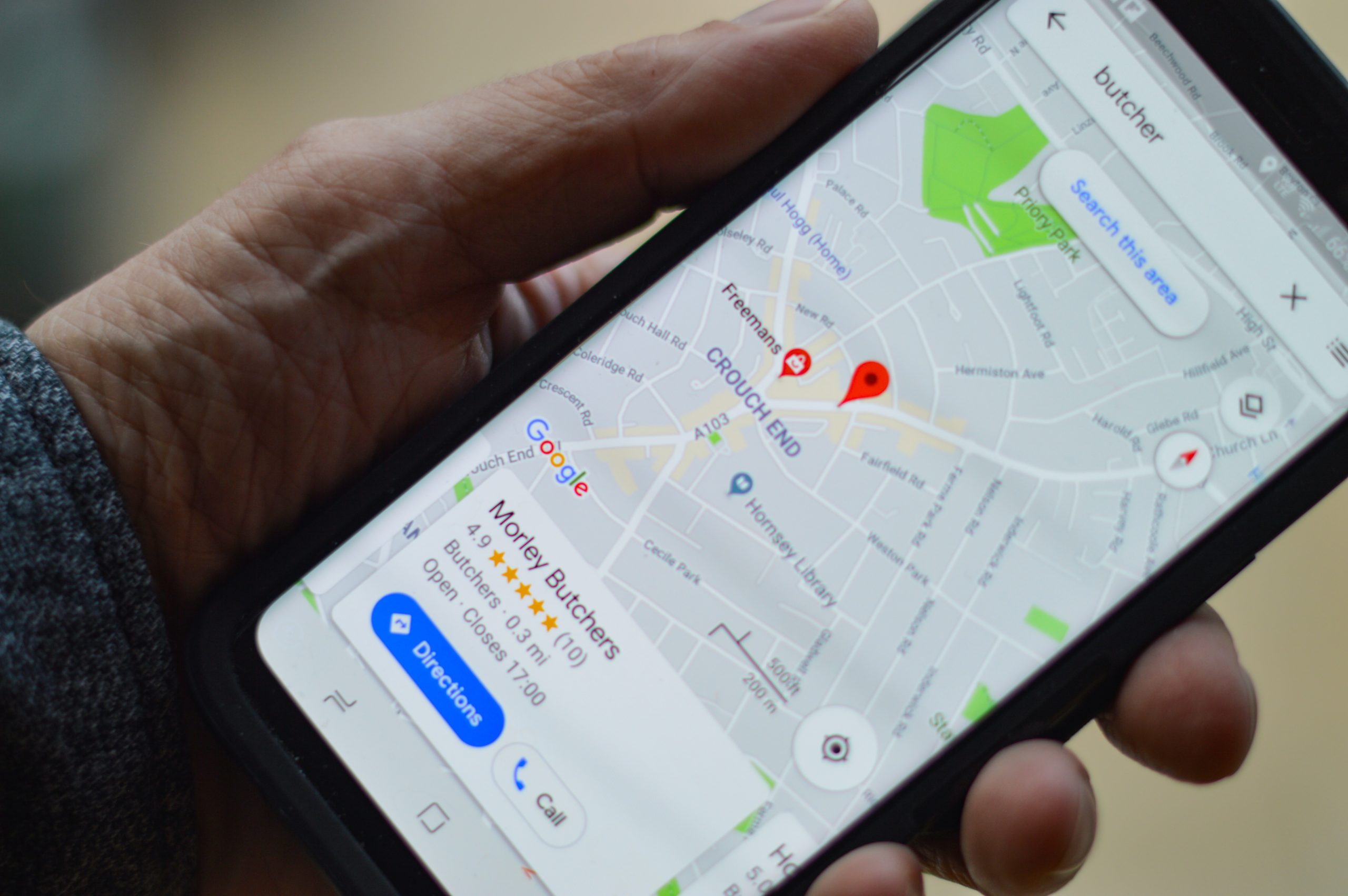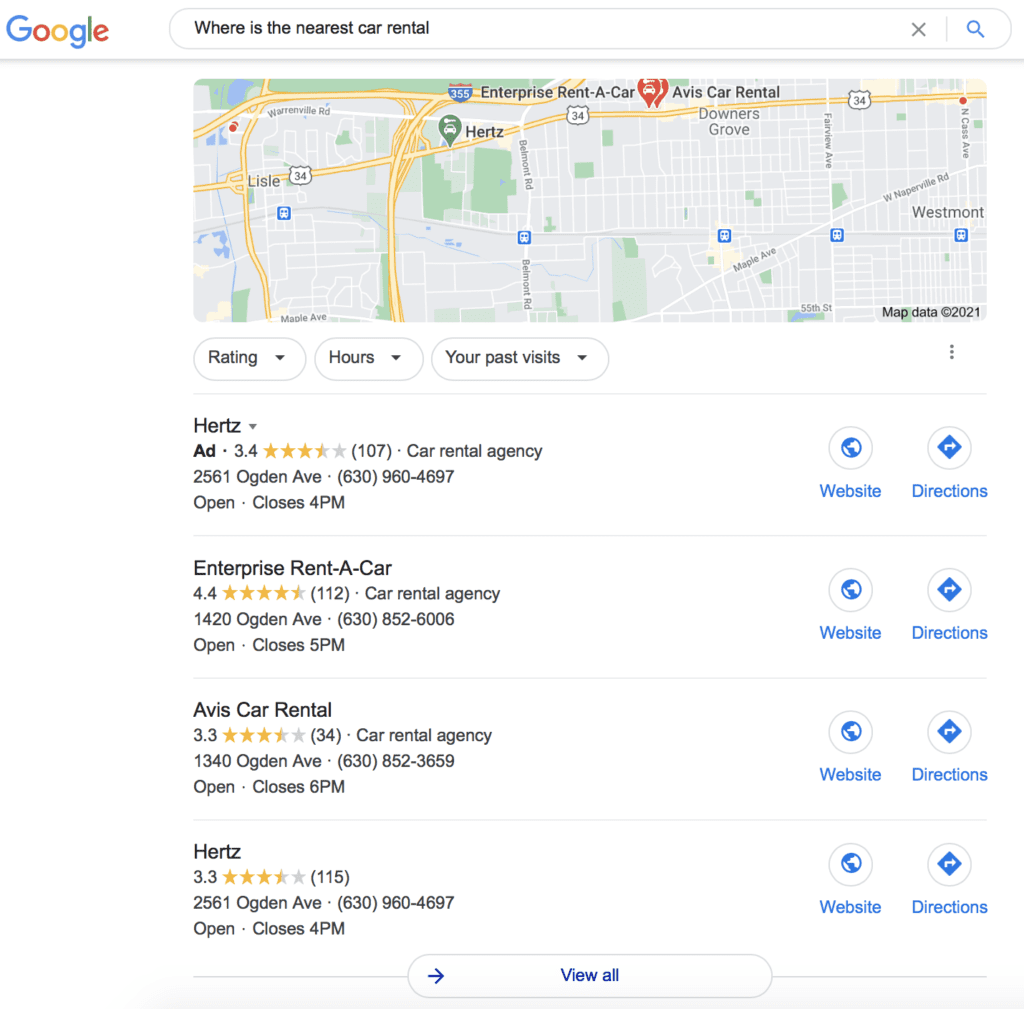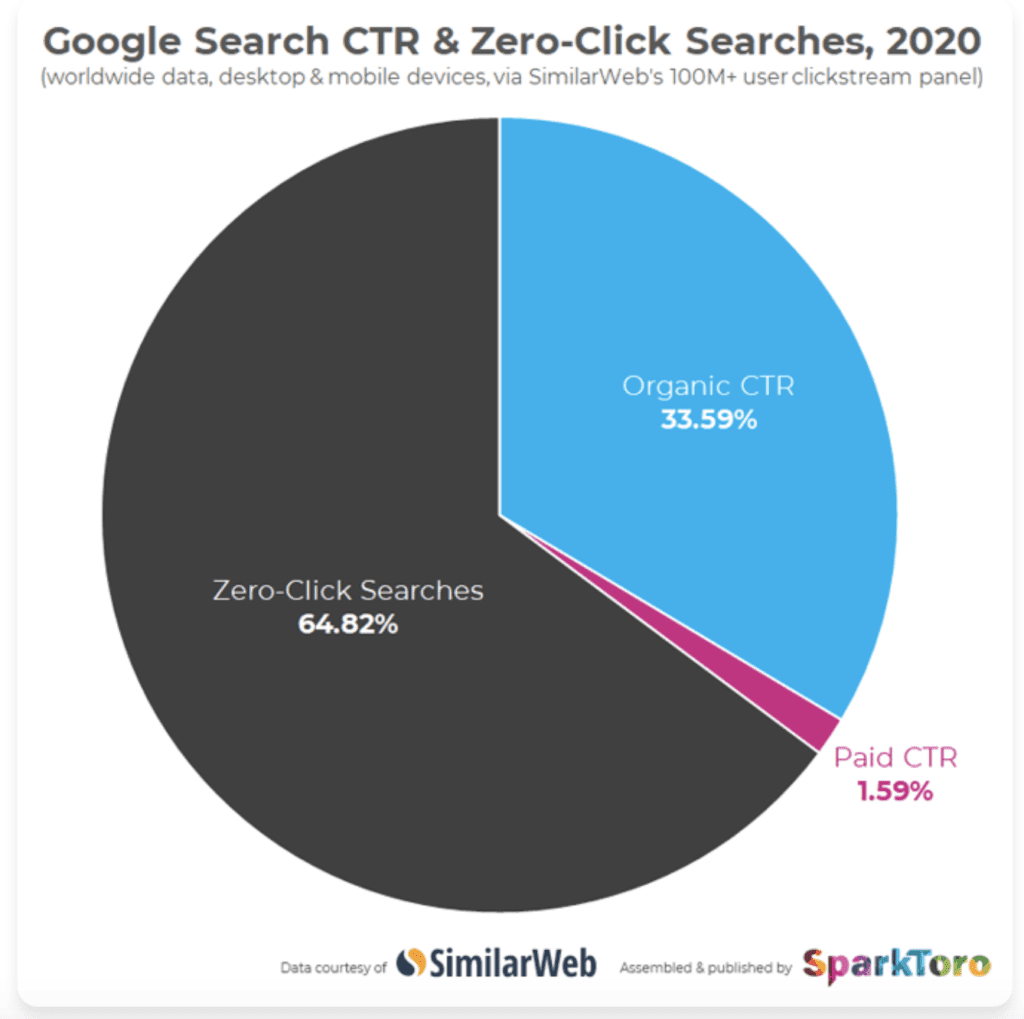Google has become so powerful that it’s the subject of anti-trust lawsuits at the federal and state levels. That’s probably one reason why Google is feeling a bit touchy about a recent SparkToro report that 65 percent of all Google searches don’t click through to a website. Instead, people are finding answers to what they need on Google’s search engine results pages (SERPs) without needing to click anywhere else. Let’s take a closer look.
What Exactly Is a Zero-Click Search, and Why Does It Matter?
A zero-click search happens when someone searches for answers to a question – say, “Where is the closest car rental?” or “When is Earth Day 2021?” – and then finds the answer to their question on a SERP without clicking on a website for further information. For example, let’s say I find an answer to “Where is the closest car rental?” with the following local pack search result:
If I don’t bother clicking through to a website in the above local pack, and instead find what I need from the local pack itself, I have performed a zero-click search. And a SERP may display answers in many other ways, such as a featured snippet, image carousel, Google Ad, Google News, featured video, and more.
The term “zero click” was coined by SparkToro’s Rand Fishkin after SparkToro reported in 2019 that half of searches on Google do not result in a click on a website. Two years later, that number has climbed to 65 percent. Here’s what SparkToro said:
From January to December, 2020, 64.82% of searches on Google (desktop and mobile combined) ended in the search results without clicking to another web property. That number is likely undercounting some mobile and nearly all voice searches, and thus it’s probable that more than 2/3rds of all Google searches are what I’ve been calling “zero-click searches.”
This chart illustrates the findings:
Industry watchers follow the zero-click phenomenon because it underscores the importance of complementing your website content with Google Ads, featured snippets, and many other types of search results that make your brand more visible on Google Search, Google Maps, and other elements of the Google universe.
Why Do Zero-Click Searches Matter to Google?
The rise of zero-click searches is a two-edged sword for Google. On the one hand, the SparkToro report shows why businesses need to choose Google as their home base for creating paid and organic content. More eyeballs on Google SERPs means a bigger audience for advertisers.
But the downside is that Google looks too powerful. This kind of attention does not serve Google well at a time when the company is fighting anti-trust lawsuits. In fact, Google has voiced opposition to the research. In a recent blog post, Google said,
This week, we saw some discussion about a claim that the majority of searches on Google end without someone clicking off to a website — or what some have called “zero-click” searches. As practitioners across the search industry have noted, this claim relies on flawed methodology that misunderstands how people use Search. In reality, Google Search sends billions of clicks to websites every day, and we’ve sent more traffic to the open web every year since Google was first created. And beyond just traffic, we also connect people with businesses in a wide variety of ways through Search, such as enabling a phone call to a business.
Google went on to knock the research SparkToro used. Among other things, Google said that SparkToro did not properly account for people navigating directly to apps or refining their queries after what appears initially to be a zero-click search.
In addition, as we have blogged, Google is trying to encourage businesses to adopt Google’s tools (under development) to maximize the value of their first-party data on their websites. If 65 percent of searches are not resulting in clicks on websites, the value of first-party data may get called into question.
What Should Brands Do?
It’s always been a good idea to balance the content you publish on your website with content across the digital world ranging from your Google My Business (GMB) listing to social media. That principle does not change in a zero-click world. We suggest:
- Keep close tabs on your website data. Are you satisfied with visits, views, and click-through rates on your website? Are they staying at a level you want, going up, or going down? If your site is not performing where it should, first examine what needs to be fixed using tools such as website audits. You may need a tune-up, anyway.
- Do build up your GMB listing. Why? Because according to Moz, your GMB listing is the biggest local search ranking signal (followed by reviews and proximity). If organic queries are increasingly going to your GMB and staying there, then make sure you’ve optimized your GMB content – including images, customer ratings/reviews, and location data – to be found.
- Link your GMB account to your Google Ads account. Linking your GMB account to your Google Ads account makes it possible for your ads to appear with location extensions, which encourage customers to visit your storefront. Through location extensions, customers can see your ads with location information such as your address. And then they can get more information about your location by clicking on location extensions.
- Make sure you’re capitalizing on Google ad products throughout the Google ecosystem. With Google keeping more searchers on Google and its properties, it behooves advertisers to capitalize on where that search activity is occurring.
- Also take a closer look at all the different ways your brand can appear on SERPs, including featured snippets and local packs. Google continues to refine its algorithm to amplify the reach of content source such as featured snippets and Google Maps data.
Finally, it’s always a good idea to watch how Google develops its tools for maximizing the value of paid and organic content. Don’t be surprised if Google doubles down on the importance of personalizing content with first-party data.
Contact True Interactive
At True Interactive, we know how to help businesses navigate the complex waters of online advertising, including advertising on Google. Contact us. Learn more about our work here.
Photo by henry perks on Unsplash


